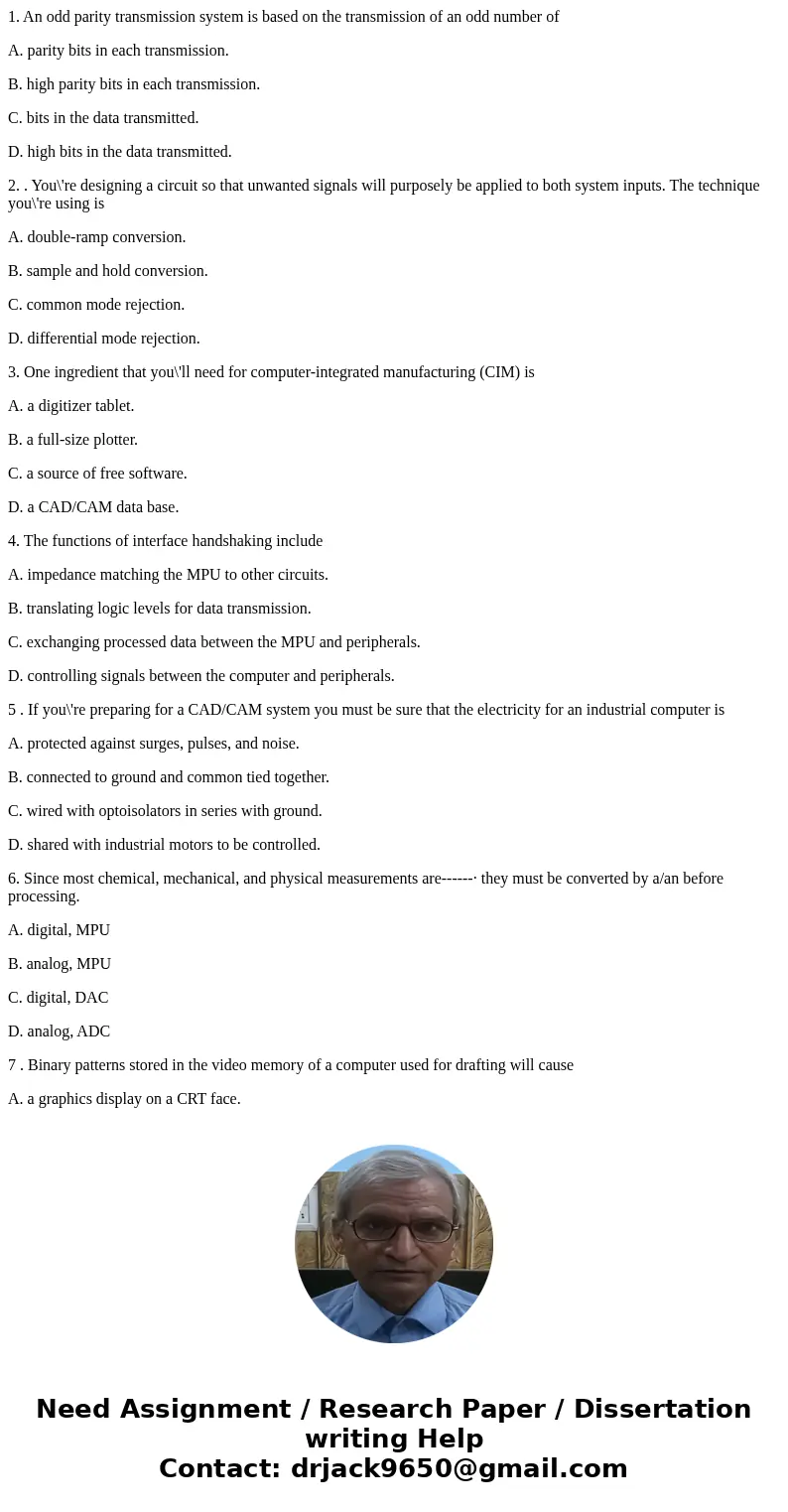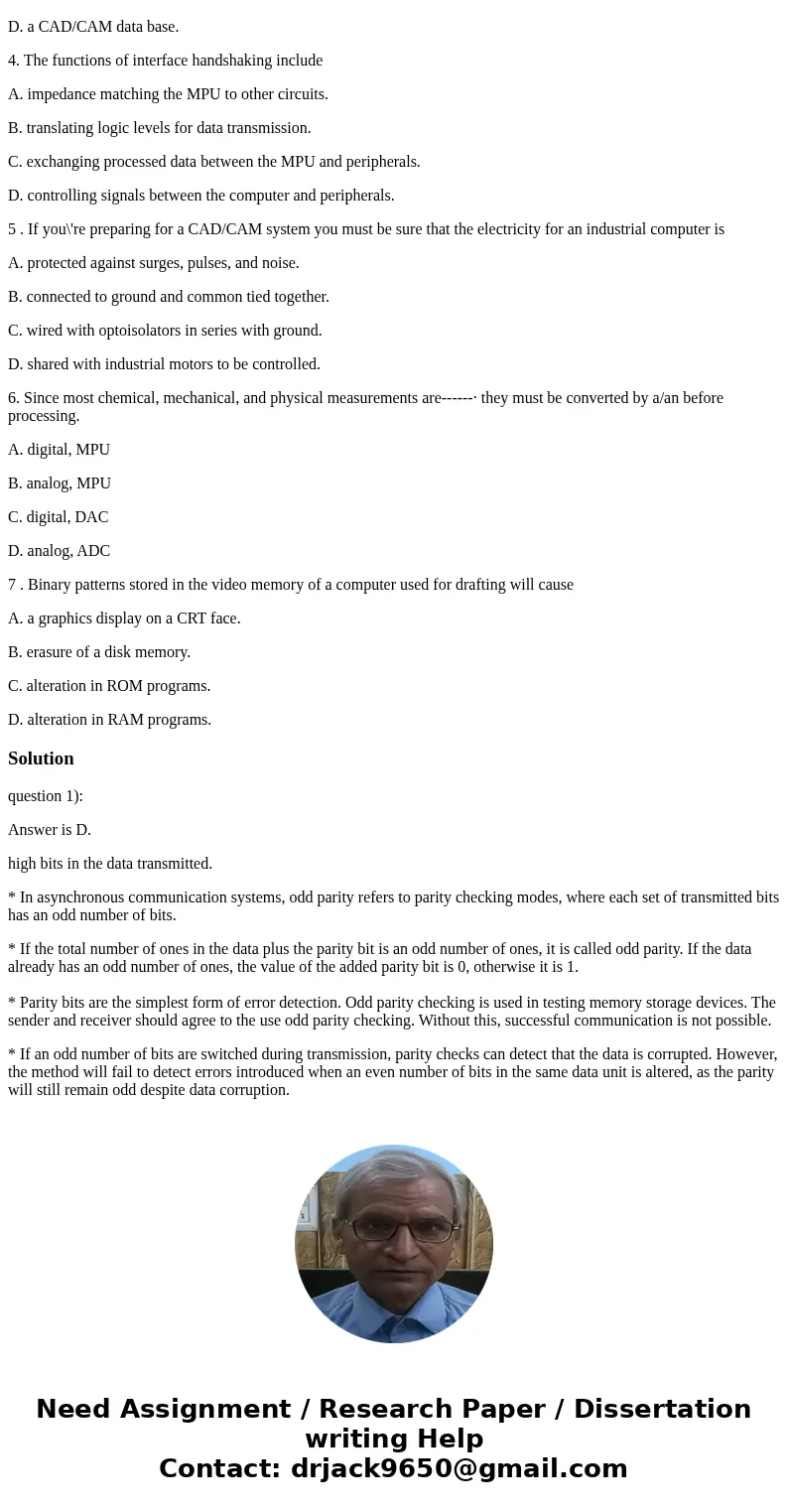1 An odd parity transmission system is based on the transmis
1. An odd parity transmission system is based on the transmission of an odd number of
A. parity bits in each transmission.
B. high parity bits in each transmission.
C. bits in the data transmitted.
D. high bits in the data transmitted.
2. . You\'re designing a circuit so that unwanted signals will purposely be applied to both system inputs. The technique you\'re using is
A. double-ramp conversion.
B. sample and hold conversion.
C. common mode rejection.
D. differential mode rejection.
3. One ingredient that you\'ll need for computer-integrated manufacturing (CIM) is
A. a digitizer tablet.
B. a full-size plotter.
C. a source of free software.
D. a CAD/CAM data base.
4. The functions of interface handshaking include
A. impedance matching the MPU to other circuits.
B. translating logic levels for data transmission.
C. exchanging processed data between the MPU and peripherals.
D. controlling signals between the computer and peripherals.
5 . If you\'re preparing for a CAD/CAM system you must be sure that the electricity for an industrial computer is
A. protected against surges, pulses, and noise.
B. connected to ground and common tied together.
C. wired with optoisolators in series with ground.
D. shared with industrial motors to be controlled.
6. Since most chemical, mechanical, and physical measurements are------· they must be converted by a/an before processing.
A. digital, MPU
B. analog, MPU
C. digital, DAC
D. analog, ADC
7 . Binary patterns stored in the video memory of a computer used for drafting will cause
A. a graphics display on a CRT face.
B. erasure of a disk memory.
C. alteration in ROM programs.
D. alteration in RAM programs.
Solution
question 1):
Answer is D.
high bits in the data transmitted.
* In asynchronous communication systems, odd parity refers to parity checking modes, where each set of transmitted bits has an odd number of bits.
* If the total number of ones in the data plus the parity bit is an odd number of ones, it is called odd parity. If the data already has an odd number of ones, the value of the added parity bit is 0, otherwise it is 1.
* Parity bits are the simplest form of error detection. Odd parity checking is used in testing memory storage devices. The sender and receiver should agree to the use odd parity checking. Without this, successful communication is not possible.
* If an odd number of bits are switched during transmission, parity checks can detect that the data is corrupted. However, the method will fail to detect errors introduced when an even number of bits in the same data unit is altered, as the parity will still remain odd despite data corruption.


 Homework Sourse
Homework Sourse